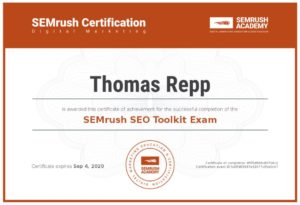 Strategy in 2026 is about meeting prospects where they scroll, swipe, and build trust. The B2B search landscape has been transformed ... and if you want your industrial brand to stay relevant, it’s time to rethink everything you know about SEO and digital marketing.
Strategy in 2026 is about meeting prospects where they scroll, swipe, and build trust. The B2B search landscape has been transformed ... and if you want your industrial brand to stay relevant, it’s time to rethink everything you know about SEO and digital marketing.
The Death of Linear Search
Forget the days of neatly typed questions into Google followed by a list of 10 blue links. That journey is dead. In 2026, search is fragmented, multimodal, and deeply social. Discovery happens across Linkedin swipes, Reddit scrolls, AI summaries, and YouTube Shorts. Your prospects are no longer just searching on Google; they’re searching through your industrial culture.
Information isn’t scarce anymore. AI Overviews and instant SERP snippets have made immediate answers basic table stacks. What prospects crave now is perspective, creativity, and trust.
Reality 1: Search is Social — Authority Must Be Earned in Public
In 2026, demonstrating E-E-A-T (Experience, Expertise, Authoritativeness, Trustworthiness) is no longer a checkbox exercise. It’s about public credibility … the perception of your brand by others, not just what you say about services and products.
A decade ago, backlinks built trust. Today, it’s Linkedin comments, Reddit upvotes, or citations in AI-generated summaries. If your brand isn’t being talked about authentically by creators, communities, or trusted networks, you’re invisible. The 2024 Google Search leak confirmed engagement as a ranking factor, highlighting social mentions and brand searches as critical signals.
Creator collaborations, community engagement, and earned visibility are now table stakes. Industrial brands must tap into creator networks and partner with industry influencers to earn credibility by association ... not just by publishing content.
Key takeaway: Prioritize creator partnerships, brand mentions, and community engagement … because brand visibility now begins with social proof, not Google’s crawlers.
Reality 2: Content Strategy Must Be Format-First, Not Platform-First
Old-school SEO strategies asked: where should we publish … blog, YouTube, Facebook? But in 2026, prospects expect content in the format they naturally consume ... regardless of the platform. A prospect looking for “How does a CNC machine handle titanium?” won’t read a blog if the top results are detailed machining videos.
Modern strategy starts with intent and format research. Ask: is the topic visual, analytical, community-driven, or quick-fire? Does it demand in-depth demos or social proof? Align your editorial calendar to the formats your audience already trusts, whether it’s videos, explainer slides, or creator-led shorts.
Key takeaway: Let prospect intent and expected format shape your content plan before choosing what or where to publish.
Reality 3: SERPs Are Fragmented — That’s a Good Thing
Search results in 2026 live across AI summaries, featured snippets, social platforms, ads, and more. Dominating search is no longer about a single first-page ranking on Google. It’s about owning every surface where your prospects seek answers.
SERP analysis must be a multi-platform intelligence effort. Map attention clusters to see where and how your prospects engage across formats. Identify if your topics generate AI Overviews, if social content ranks, or if forums dominate the conversation.
Then build a SERP universe map for your industrial niche, charting where your content needs to appear. Engineer distribution strategies to align with each surface’s tone and trust signals ... while still aiming to lead conversations on Google featuring your industrial brand story.
Key takeaway: Track where your prospects find information (Linkedin, Reddit, AI Overviews, industry aggregator sites, etc ) and tailor content for each unique surface.
Reality 4: Live Intelligence Beats Static Strategy
With cultural cycles shrinking and social trends dictating discovery, quarterly audits are obsolete. Modern strategies must run on real-time intelligence. Industrial brands need live data on creator activity, SERP volatility, social spikes, and AI-generated outputs.
Adopt always-on monitoring to catch shifts in how prospects search and what earns their attention. Replace static content calendars with adaptive workflows that react to emerging opportunities. Winning brands will shape culture proactively ... not just react when performance dips.
Key takeaway: Use real-time insights to guide what you publish, moving beyond static schedules to adaptive, intelligence-led planning.
Reality 5: Your Website’s First Audience is Now AI
The traditional goal was to engage humans first, then optimize for algorithms. But in 2026, prospects often encounter your content through AI Overviews, voice assistants, or LLM-powered search ... long before they visit your B2B site.
This doesn’t mean sacrificing quality for machines. Instead, it demands semantically clear, structured, summary-friendly content that AI can easily cite and summarize.(Like this structured, outlined, summarized article!) Build pages tied to specific intents, and invest in third-party reputation via creators, reviews, and forums.
Monitor how your brand appears in AI outputs, from Google’s position zero to assistant responses. Design summary-first content: concise, structured, and quotable ... but still helpful and engaging for human readers.
Key takeaway: Create content that’s machine-readable and summary-friendly, because AI-driven discovery is now your brand’s front door.
Discoverability is a System, Not a Channel
In this new era, search isn’t a channel; it’s a behavior. Industrial brands must shift from creating isolated blogs and videos to building intent-led, format-aware systems of content designed to earn attention across every discovery surface.
Winning attention means showing up meaningfully wherever your prospects’ attention flows ... with tailored content matching platform, query, and user intent. Discoverability must be engineered, not just optimized.
Want to know more, go to What We Do or Contact Me in the menu above. Or give me a call at 269-375-0349.
Author:Tom Repp
A passionate marketer attempting to change the way industrial marketers leverage the web as a growth-oriented, lead generation machine. View all posts by Tom Repp




